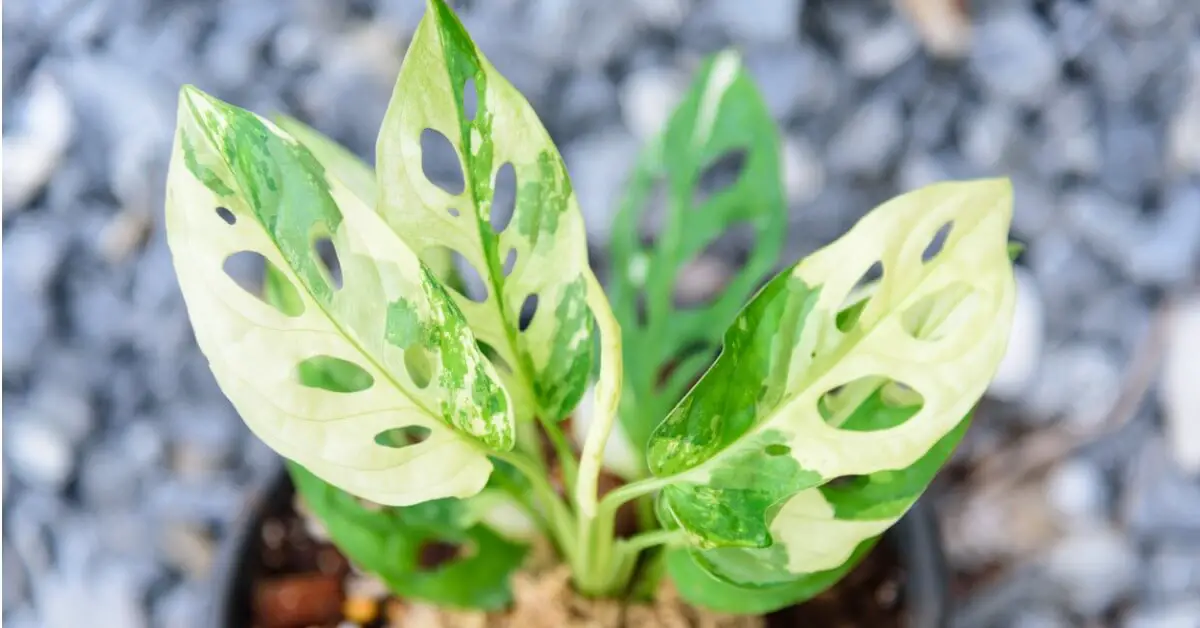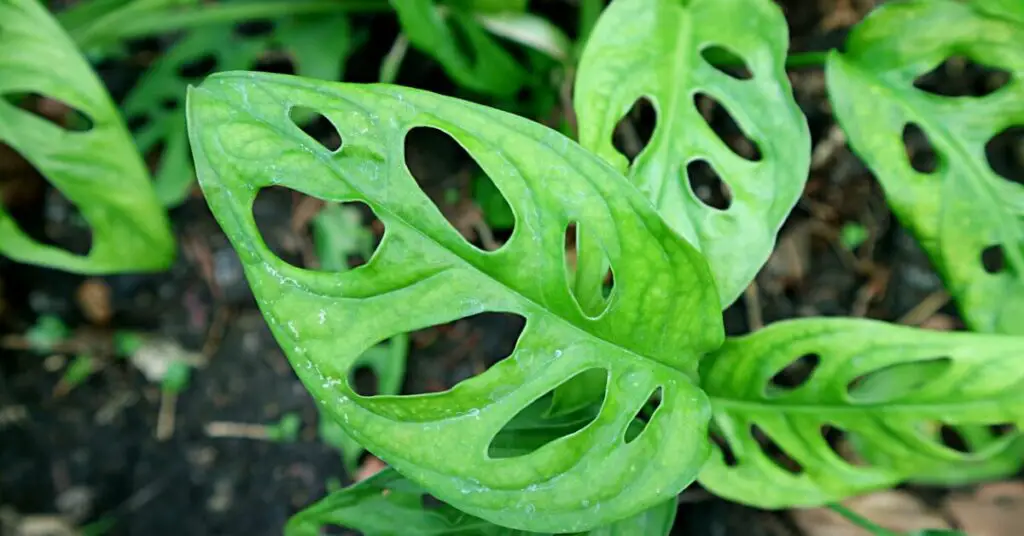Adanson’s monstera (Monstera adansonii) is a popular house plant native to the rainforests of Central and South America. Common names include Swiss cheese plant or five holes plant due to the large holes in its leaves called fenestrations.
For those interested in expanding their plant collection beyond houseplants, consider exploring native edible plants that thrive in outdoor gardens. Transform Your Garden with Native Edible Plants.
Below, we cover all the details you need to know about growing Monstera adansonii.
Monstera adansonii Care
Swiss cheese plants are low-maintenance house plants that grow quickly and can be easily propagated. It’s a vining plant that will cascade down from a hanging basket or can grow up a moss-covered pole. This plant thrives indoors if you provide well-draining soil, don’t overwater, and provide plenty of indirect sunlight.
Being native to the tropics, Monstera adansonii prefers humid environments and won’t tolerate freezing temperatures. It needs fertilizer a few times a year and pruning if you want to keep it smaller than 8 feet tall. Here are the details about caring for Monstera adansonii.
Soil
Swiss cheese plants grow best in well-drained soils because their roots can dry out slightly between waterings. Orchid mixes work well since they comprise perlite, vermiculite, bark, and lava rocks, allowing for aeration of the roots between waterings.
If you’re looking for more tips on soil mixes and plant-friendly composting techniques, check out our guide on Starting Your First Vegetable Garden in North Carolina.
Watering
Water your Swiss cheese plant whenever the soil is dry. Take care not to leave the pot sitting in a saucer with water for long periods, or your plant could develop root rot.
Lighting
Adansonii Monstera doesn’t tolerate full sun well. Please keep them in bright rooms with indirect sunlight or dappled shade. Place your Swiss cheese plant near east or west-facing windows for optimal lighting.
Proper lighting is key to maintaining vibrant plant health, whether indoors or outdoors. If you’re interested in optimizing light conditions for different plants, read our post on Container Gardening for Vegetables.
Humidity
Monstera adansonii are native to the rainforest and require humidity. If the air is dry, you can periodically mist your plant. You can also add pebbles to a saucer under the pot and add water, which increases humidity as it evaporates.
Maintaining 80% humidity indoors can be challenging, but a reliable humidifier can make all the difference. This Humidifier is a great option to ensure your Alocasia Cuprea thrives.
Temperature
Monstera adansonii won’t tolerate freezing temperatures. Keep plants above 55 degrees Fahrenheit to thrive.
Fertilizing
Use a 1:1 mix of liquid fertilizer and water to fertilize your Swiss cheese plant monthly. If you replant in a potting mix containing fertilizer, don’t fertilize for at least four months.
Propagation
To propagate Monstera adansonii with stem cuttings, cut off 4 to 6 inches of the vine right below a leaf node. Remove the leaves on the bottom half and apply a rooting hormone at the base. Plant in a moist, soilless potting mix. Keep the potting mix moist, establishing the roots after several months.
To propagate in water, prepare a cutting as described above and place it in a vase with 2 inches of water. Change the water weekly, and the roots will grow in six weeks. Wait 2 to 3 months before planting.
A sharp pair of Stainless Steel Pruning Shears is essential for safely separating and propagating Alocasia corms.
Disease and Pests
Swiss cheese plants are generally disease and pest-resistant but may be impacted by common houseplant pests. While mealy bugs, scale insects, spider mites, and whiteflies can feed on Monstera adansonii, they typically won’t kill the plant and can be treated with insecticides. To prevent root rot issues, avoid overwatering.
To protect your plant from common pests, consider using Neem Oil Spray, a natural and effective way to keep your Alocasia Cuprea pest-free.
Toxicity
Monstera plants are toxic to dogs and cats and mildly toxic to humans. Keeping your Adamson’s Monstera away from children and pets is best.
Monstera adansonii Variegated

While Monstera adansonii are already aesthetically unique, variegated forms (which have variable white patterns on the leaves) are available.
Variegated varieties require more sunlight because white areas on the leaves lack chlorophyll and won’t photosynthesize.
Benefits of Monstera adansonii
Swiss cheese plants benefit your home by improving indoor air quality. They can remove pollution and increase oxygen in the air.

